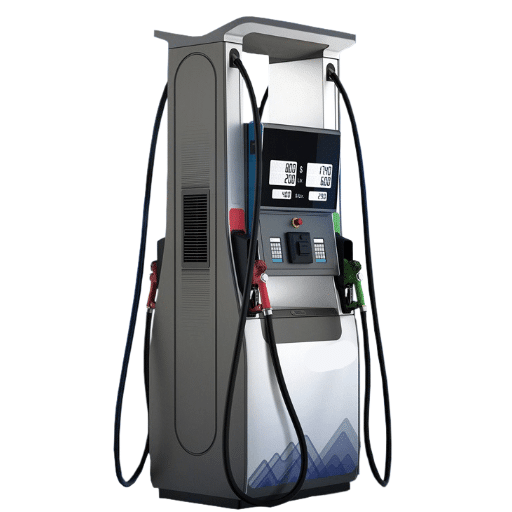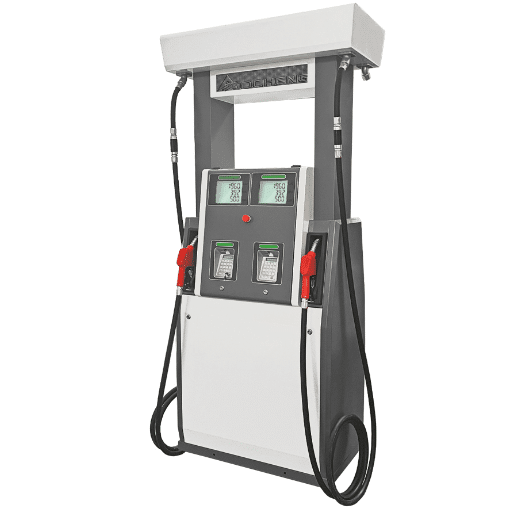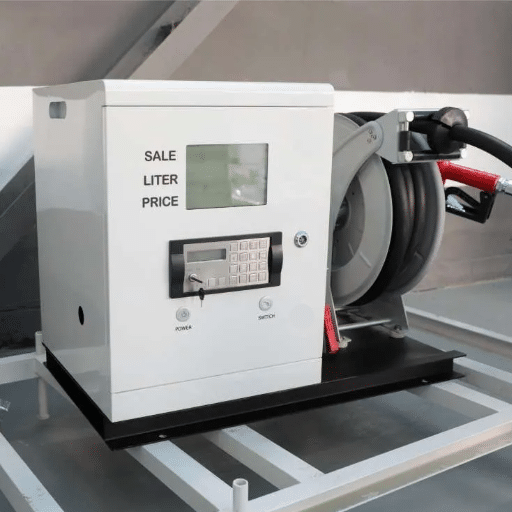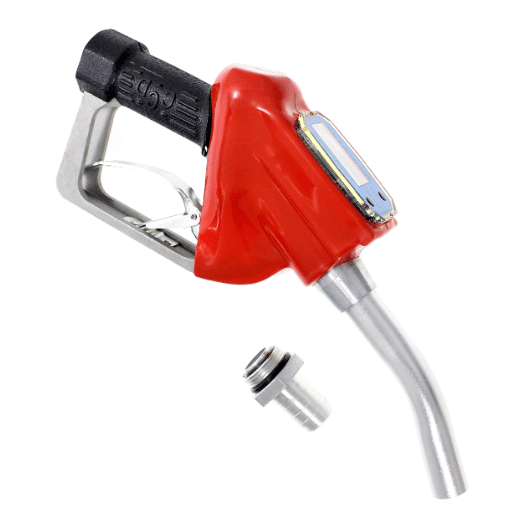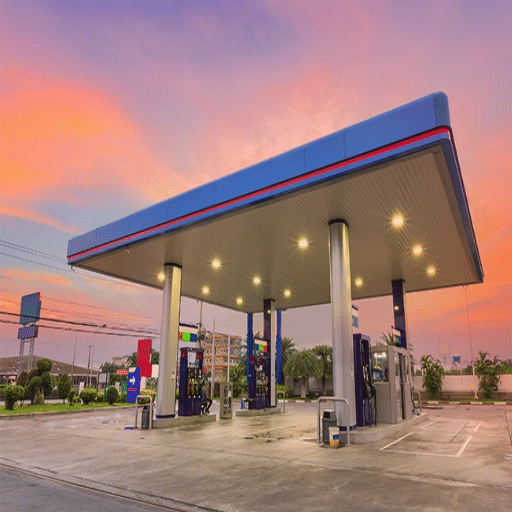
Constructing a gas station is not only a complicated and multi-layered project but also one that presents huge challenges if proper planning is not done, along with a good grasp of the costs involved, and compliance with the regulatory requirements. It doesn’t matter whether you are an investor wanting to earn from busy sites or a businessman going after a steady business model; knowing the financial situation of gas station construction is vital for your success. The following article will explain, with difficulty, the major elements that go into the costs of construction, starting from the purchasing of land and getting the permits, to the installation of equipment and setting up of the operations. By the time you finish reading, you will have had an exhaustive rundown of the elements that affect the expenses of the gas station building, which will facilitate your making informed choices regarding your venture.
Overview of Gas Station Construction
The construction of a gas station comprises a number of basic elements that have a direct bearing on the total expenditure. These are:
Land Acquisition
Usually, the most expensive part of the project is acquiring an appropriate place, and its price is affected by the demand for the location, zoning laws, and the size of the property.
Permitting and Compliance
Regulatory conditions, among them, environmental permits and construction approvals, can differ widely from one area to another and usually require a lot of time and money to be spent.
Fuel System Installation
Tanks, dispensers, and other equipment for the storage and dispensing of fuel represent a considerable part of the overall cost and have to adhere to very high safety and environmental regulations.
Building and Site Development
This covers the whole process of creating the convenience store, toilets, and other facilities for customers as well as paving, lighting, and planting the area around.
Utilities and Infrastructure
Electrical, water, sewage, and internet facilities have to be installed to make sure the station is operating properly.
Signage and Branding
Well-designed and properly placed signs and a good brand name are vital for the gas station to be visible and draw in customers, and this sometimes means using certain designs and materials.
All of these factors together set the financial burden of a gas station project and consequently offer a basis for both budgeting and planning.
What is Involved in Building a Gas Station?
Establishing a gas station is a complex operation that entails strategic planning, compliance with regulations, and flawless execution. The first step is to choose the best location, where the factors of traffic patterns, zoning regulations, and demand in the market will have a great influence. After the site is obtained, the process of getting permits and complying with environmental regulations, such as soil contamination checking and underground storage tank requirements, takes place.
During the building period, there will be civil work to convert the area into a site ready for the fuel to be put in, the stations, and the store to take place. At this point, the installation of the electrical and plumbing systems, the sewage, and the specialized fueling technology for efficient operation are all crucial. Also, the use of safety measures like vapor recovery systems and spill containment protocols is a must to fulfill the industry standards.
The end of the project includes the installation of the logo and directional signs, along with operational testing, which is done to make sure the place is ready for public access in terms of the legal requirements and proper functioning. Each step, from planning to execution, needs very careful supervision in order to reduce the risks and make the most profit.
Key Components of Gas Station Construction
The construction of a gas station involves various vital components that are necessarily different aspects of safety, functionality, and regulatory compliance. The major components are:
Site Selection and Feasibility Analysis
The site that will be most suitable for the intended project has to be chosen, which will take a lot of effort, including deep analysis of the zoning laws, traffic patterns, and accessibility. The soil is tested, and environmental studies are done to rule out contamination and to confirm that the site is good for the project.
Design and Permitting
Making a comprehensive site plan is the heart of the process; this plan calls for the areas of fueling, USTs, convenience stores, and parking places. Local and federal safety regulations will be used to specify civil and structural engineering. Furthermore, it is very important to get permits from the regulatory bodies to be on the legal side of the matter.
Infrastructure and Utility Installation
This part comes with the building of the underground storage tanks, the piping systems, and the use of durable, anti-corrosive materials for the fuel dispensers. Service areas get electric wiring, lighting, and ventilation systems all done according to the safety codes. The utilities like water supply, drainage, and fire suppression are also built in compliance with the very strict standards.
Fuel Storage and Dispensing Systems
The USTs with all their plumbing are correctly set up, thus they are enabling the storage of the fuel safely and also the supply of fuel to the customers. The measures to prevent leakage, to recover vapor, and to have secondary containment around the tanks are incorporated in order to protect the environment and to keep the gas station complying with the EPA’s requirements.
Environmental Safeguards
The first step is to install vapor recovery systems, spill-prevention measures, and stormwater management solutions, which are very important for reducing the ecological impact. During every step, adherence to the local, state, and federal environmental regulations must be guaranteed.
Construction and Quality Control
On-site construction is building the fuel canopies, convenience stores, and operation areas. Quality control measures like material testing and inspection of construction standards will be implemented continuously to make sure the project adheres to specifications.
Branding and Final Testing
The very last step of the process is the branding of the gas station, along with painting and signage, and continuous testing of the operational systems. This will show that the gas station is safe, functioning, and ready to serve the public.
Every component requires technical accuracy and following the industry standards, to, besides the operational efficiency and profit, also minimize risks.
Importance of Site Selection
The site that is chosen for the gas station is crucial as it directly influences the accessibility, customer influx, and the entire profit through the gate. Carrying out an analysis of the factors that are critical, such as locations with high traffic, closeness to main roads or junctions, and being seen from a distance from the company, will result in getting the most people engaged. Moreover, demographic data like the number of people and cars in the area helps in giving the right services to the right group. Compliance with regulations like zoning and the environment has to be considered to escape legal and operational challenges. Also, analyzing competition is a major step in the process of finding the best location, as it shows what the market is lacking and what is already oversaturated. The place that has been thoroughly studied and chosen with a strategy not only recovers the initial investment but also makes the business run smoothly for the long term.
Startup Costs and Financial Breakdown
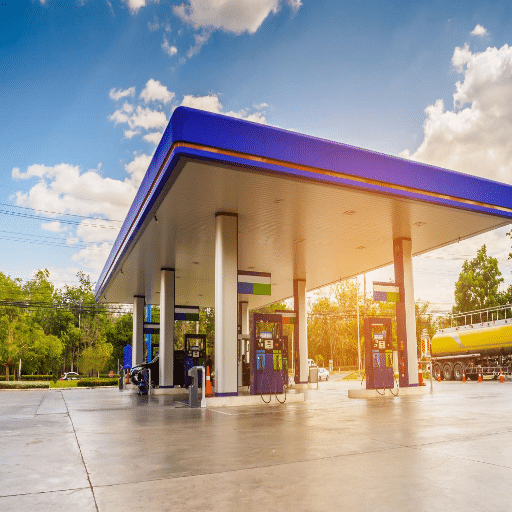
The startup costs are the total amount of money spent to set up and run a new business or project. Property acquisition or lease deposits, equipment and inventory purchase, marketing and advertising, licensing and permits for business operation, and payroll for the initial staff are typical expenses. For example, a retail business may set up costs for shelving, point-of-sale systems, and stock procurement, while a service-based business may give priority to operational tools and software.
Financial breakdown also means dividing these costs into one-time expenditures and recurring expenses. Legal fees, initial build-out or renovations, and branding elements like logos and website development are among the one-time expenditures. Recurring costs typically cover rent, utilities, employee salaries, insurance premiums, and ongoing inventory replenishment. Accurate budgeting and forecasting can guarantee that financial resources are allocated in an effective manner, which will also help in preventing the risks of underfunding or overspending. Usually, a reserve of capital that is 10-20% of the total startup budget is kept, and this is for unforeseen contingencies or delays.
Analysis of industry standards and sometimes authoritative resources gives rise to a financial strategy that is the best, and companies will be able to divide their startup investments with the goals of sustainable growth.
Initial Costs to Open a Gas Station
The opening costs of a gas station can differ a lot depending on the geographical area, the size of the station, and the business goals. In general, the cost of a new gas station is projected to be in the range of $250,000 to $2,000,000 for the first investment. These expenses cover a variety of aspects, such as land purchase or renting, building or upgrading the main area, tanks and pumps for fuel installation, and following safety and environmentally-friendly rules.
The major costs are:
- Real Estate: Buying land can set the entrepreneur back anywhere between $100,000 and $1,000,000, based on the area, whether he builds a new station or just redecorates an old one.
- Fuel Systems: The installation of underground fuel storage tanks along with dispensing equipment could cost anywhere from $150,000 to $400,000.
- Permits and Licensing: To run the gas station legally, the owners have to get several permits and licenses, which are usually priced between $5,000 and $15,000.
- Equipment and Inventory: Some more money will be needed for buying convenience store equipment, signs, and an initial stock, around $50,000 to $100,000.
- Working Capital: A cash reserve of $50,000 to $100,000 for covering the initial operating costs and unexpected expenditures is highly recommended.
Performing proper market research, complying with local laws, and hiring experts to prepare a complete financial plan are all necessary for the gas station’s possible and effective start-up.
Cost Breakdown of Gas Station Development
Building a gas station is a pricey affair, but the price can differ drastically depending on the place, the size, and the services offered. A comprehensive description of the most frequent expenses is provided below.
| Cost Category | Price Range | Description |
|---|---|---|
| Land Acquisition | $100,000 – $2,000,000+ | One of the costliest purchases is buying a fitting piece of land. Usually, city areas that have heavy traffic and a lot of people pay the most. |
| Construction Costs | $500,000 – $1,500,000 | Building the entire gas station, including tanks for fuel, pumps, and a convenience store. Includes site preparation, foundation work, and compliance with regulations. |
| Fuel System Installation | $400,000 – $800,000 | Installing underground fuel tanks, dispensers, and piping. Includes consultancy and guaranteeing environmental safety standards are met. |
| Convenience Store Setup | $150,000 – $300,000 | Interior setup including shelving, counters, refrigeration units, and other fixtures. |
| Signage and Branding | $50,000 – $100,000 | Installation of high-visibility signage and branding for franchise gas stations to ensure brand standards are met. |
| Initial Inventory | $20,000 – $50,000 | Costs of snacks, drinks, and other basic goods in the convenience store. |
| Permits and Licensing | $10,000 – $50,000 | Obtaining permits and licenses, including environmental evaluations and operating permits, based on local rules. |
| Technology and Systems | $15,000 – $50,000 | Point-of-sale (POS) systems, security cameras, and fuel monitoring software to ensure smooth and secure operations. |
| Working Capital | $50,000 – $100,000 | Reserves for initial operational costs, employee salaries, and contingencies. |
| Total Estimated Cost | $1,500,000 – $3,500,000+ | Overall cost range; may exceed this in high-demand areas or with additional services. |
Good financial planning and taking advice from experienced professionals are the keys to minimizing the costs and, at the same time, ensuring that all the required regulations are followed.
Factors Affecting Gas Station Construction Costs

Location
The geographic area plays a major role in determining costs, mainly due to the differences in land values, zoning laws, and various fees for permits, which can be very different in urban, suburban, and rural areas.
Land Preparation
Among the various factors, site preparation costs, which include digging, leveling, and, if necessary, remediation of the environment, can take up a substantial part of the overall budget.
Facility Size and Design
Larger stations with more fuel pumps, larger store areas, or special features like EV charging stations need more investment in construction and infrastructure.
Compliance Requirements
Environmental and safety regulations, for example, the regulation of underground fuel storage tanks, can be expensive throughout the whole process of compliance, including design, materials, and inspections.
Labor and Materials
Differences in the labor market availability, pay rates, and materials prices according to the market conditions and the project’s location can all contribute to raising the costs.
By considering these factors in the planning stage, investors will be able to create a comprehensive and realistic construction budget that is specific to their project requirements.
Location and Market Dynamics
The impact of location and market dynamics on construction projects is very significant. These factors mainly develop the feasibility of a project and the costs involved. Areas that have a strong economic growth and a lot of construction demand usually have high competition, which results in higher land prices and labor costs. On the other hand, regions that have less demand might offer the advantage of lower costs, but at the same time, they could have longer durations of the project, or the high costs of logistics may be involved.
Moreover, the local regulatory environment, comprising zoning regulations, conservation of the environment, and the process of granting permits, can be very influential in determining the length of the project and the total cost. Accessibility to suppliers and resource availability are other factors that influence the cost; to illustrate, sites that are far away usually incur more in transportation to bring in materials and equipment. Besides, these modern-day conditions can be cyclical; sometimes, their material prices shoot up, and there are no available workers during peak demand, etc. Such scenarios require that one keep close watch over the situation and have a well-thought-out plan in place to avoid financial losses and keep the project alive.
Permits and Regulatory Requirements
Permits and regulatory requirements are unavoidable in project planning because they guarantee compliance with the laws imposed by the local, state, and federal governments. The project’s characteristics and its site dictate the kinds of approvals needed, such as zoning permits, environmental assessments, and finally, building permits. Zoning permits are responsible for the control of land use; they guarantee that the project is in line with the municipal planning strategies’ general outlines. On the other hand, environmental assessments consider and then regulate the nature of the ecological impacts by imposing the associated mitigation measures as well. Building permits, in turn, pay attention to safety and structural codes compliance, usually requiring extensive construction plans and regular inspections.
The obtaining of permits can take longer in some cases than in others, as it is largely dependent on different factors such as the authority, complexity of the project, and the time taken for processing by the agency. Some permits require the conducting of public hearings or other reviews; thus, the approval time is extended. To assist in the process, it is advisable to communicate with the pertinent regulatory agencies at the start of the project and keep meticulous records of every submission. One of the main challenges might be to handle the ever-changing regulations and, at the same time, manage the overlapping of requirements from various authorities. By bringing in the knowledge of specialized consultants, delays can be avoided, and at the same time, the risks associated with non-compliance can be reduced; hence, the overall project effectiveness would be increased.
Equipment Costs and Installation
The costs of equipment and their installation depend highly on the systems that are being deployed in terms of type, scale, and complexity. The initial cost analysis can be broadened to include hardware expenses, such as machines, tools, or devices, along with other accessories that need to be purchased for the complete operational capability. Usually, installation costs will consist of labor, site preparation, permits, and the testing needed to verify compliance with industry standards.
The current benchmarks in the industry indicate that modular and prefabricated equipment can be a major factor in reducing both material and installation costs, as there is a significant reduction in on-site assembly. Besides, the use of experienced contractors combined with purchasing materials in large quantities can lead to a major cut in the overall cost. To avoid surprises in terms of costs, it is better to have contingency plans for possible structural changes or delays and to include the expenses for equipment warranties and long-term maintenance in the financial projections.
Steps to Open a Gas Station
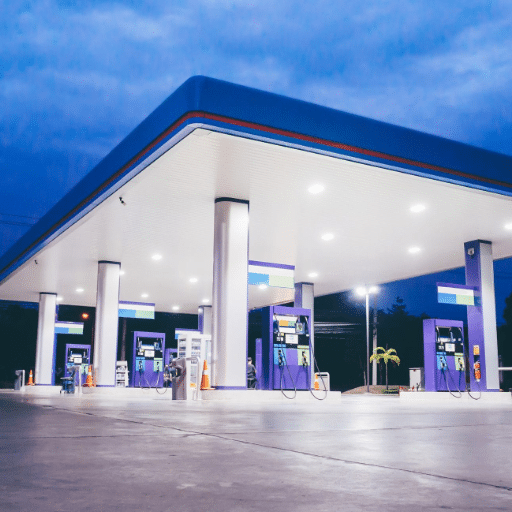
Conduct Market Research
Examine the intended audience and their needs, the rivals, and the number of people living in the area where the product will be sold. Find out what legal restrictions exist regarding the location and operation of gas stations.
Develop a Business Plan
Describe the financial forecasts, investment costs, ways of making money, and strategies for running the business. Also, write down the plans about getting finance, picking suppliers, and organizing maintenance.
Secure Financing
Get money through loans, investors, or by using your own money. Make sure that the financial plan includes all costs related to construction, equipment, and running the business.
Choose a Suitable Location
Pick a location that not only gets a lot of people passing by but is also easy to access. Check whether the area is meeting the local zoning and environmental requirements.
Obtain Necessary Permits and Licenses
Request those permits and licenses that are a must, in addition to the ones for environmental clearance, business licensing, and fuel resale permits.
Design and Construct the Facility
Partner with well-versed contractors to come up with the layout for the gas station and execute the construction process. Concentrate on productivity, security, and adherence to the industry standards.
Establish Agreements with Suppliers
Set up relationships with fuel distributors via contracts and ensure that the inventory management systems are always synchronized. Look for collaborations on offering extra retail or service products.
Recruit and Train Staff
Bring in the right people and ensure they get properly acquainted with the safety procedures, company promotion, and daily activities.
Implement Marketing and Launch Strategy
Come up with offers and advertisements that would facilitate bringing in customers. Arrange for the opening event so the local people will get their first experience of the new gas station.
Ensure Ongoing Compliance and Maintenance
Carry out inspections of the machinery regularly, comply with regulations, and solve maintenance problems immediately to keep the operations running smoothly.
Planning and Research Phase
Proper planning and research are steps that definitely contribute to a gas station’s success. Market analysis should be the starting point of your evaluations; through this, you will know if the gas station demand in your targeted area is high or low. Look into local population characteristics, the amount of traffic in the area, and how many gas stations are in the proximity. The information obtained through this research will allow you to select a location where the gas station can be easily seen and reached, and have lots of people passing by daily.
Next on the list is determining the total cost of setting up a gas station, including the purchase or lease of land, construction, installation of equipment, and permits. Also, look for areas making money from sources other than gas station sales, such as the selling of groceries in a store, car-wash services, or fast food restaurants, and plan to invest in them in order to have a diversified income.
Be sure to inquire about federal, state, and local government rules concerning environmental protection and permits for operating the business. Learn about the safety measures that have to be taken, such as the tanks being compliant with underground storage, and be ready for a tough standard to be met. Creating a thorough business plan that is based on your findings will not only take you through the next steps but will also be helpful if you need to obtain financing.
Financing Options for Your Gas Station
Acquiring funds is the primary thing that must be done before a gas station can be opened and run. There are several ways to get the money, each with its pros and cons depending on your financial condition, credit rating, and business plans.
Traditional Bank Loans
Banks and credit unions are typical providers of commercial loans. Most of the time, to qualify for one of these loans, you must have a good credit history and present your future financial figures and a detailed business plan. These loans usually come with a very good interest rate, and the repayment terms are between 5 and 20 years. You will likely need to give the bank security, such as real estate or machinery, in order to get the loan.
Small Business Administration (SBA) Loans
The SBA has various loan options, including 7(a) and 504 loans, to name a few, which provide exceptionally beneficial terms and conditions to the small business sector. The difficulty of the application is inversely proportional to the amount of down payment needed and the availability of government assurance to cover the lender’s risk.
Alternative Lenders
Alternative lenders like online and fintech companies usually have a simpler and quicker lending process than traditional banks, plus they offer the customer flexible payment options. These loans also tend to be more expensive, and the duration is usually shorter. This financing method is ideal for businesses that want to access funds quickly or those that do not meet the criteria for a classic loan.
Franchise Financing
If you are planning to buy a gas station with a franchised operation, the franchisor will probably provide you with financing directly, or it might refer you to the lender with which it collaborates. Oftentimes, this route is less time-consuming, and the terms are more suited to the franchisor’s needs.
Before making a financial decision, thoroughly examine all of the financing conditions, such as interest rates, fees, and payment schedules, to confirm that they are congruent with your business model and monetary resources.
Getting the Necessary Permits
Obtaining the necessary permits is an indispensable condition for running a gas station, as it guarantees compliance with the regulations of the federal, state, and local governments. Multiple permits will be required depending on your area and the type of services you offer. The most common requirements include the following:
- Business License – First and foremost, a general business license from the local government must be obtained to operate the gas station legally.
- Environmental Permits – Stringent environmental regulations apply to gas stations. The permits of underground storage tanks (USTs), hazardous materials handling, and EPA (Environmental Protection Agency) compliance are the ones that you have to take.
- Zoning Permits – The property for the gas station must be zoned for commercial use and must fully comply with the local zoning laws relating to fuel stations.
- Fire and Safety Permits – The storage and dispensing of gasoline present a fire hazard, thus fire inspections and permits are required by law.
- Signage Permits – Regulations on signage by most municipalities for businesses; obtain the permits necessary for the installation of signs, particularly in the case of advertising or branding.
- Alcohol or Tobacco Selling Permits – If you are going to sell alcohol or tobacco products, then extra state-specific permits are likely to be needed.
In most cases, each permit has a detailed application process, relevant fees, and periodic renewals. Therefore, it is advisable to consult either local regulatory agencies or a professional compliance consultant to help make the process smoother and prevent costly legal problems.
Understanding the Gas Station Business

The gas station business consists of a few very important parts, which all together lead to the business’s success. First of all, sales of fuel are the major source of income, and it’s necessary to have good prices and reliable suppliers. On the other hand, the regional store functionalities are sometimes based on fuel sales, presenting customers with snacks, drinks, and staples. Moreover, the place of setting up the station is of utmost importance; the stations that are in high traffic or close to the highway get a larger customer base. Efficiency in operations, which consists of the routine maintenance of pumps and compliance with safety regulations, is vital for long-term profitability. Besides, good customer service and value-added services such as car washes or loyalty programs can help make more money and keep customers coming back even more.
Owning a Gas Station: Challenges and Rewards
Challenges
- Fluctuating Fuel Prices: Constant shifts in fuel pricing determined by global oil markets can greatly impact profits.
- Competition: Nearby gas stations or huge retail chains may offer very low prices, making it necessary to distinguish through additives and loyalty programs.
- Regulatory Compliance: Owners must follow very stringent local, state, and federal environmental and safety standards, often requiring heavy investments in upgrades and inspections.
- Market Volatility: Economic conditions and oil market fluctuations create uncertainty in revenue projections.
Rewards
- Steady Income: A gas station in a good location with high traffic can be a reliable source of income.
- Diversified Revenue: Additional services like convenience stores, car washes, and restaurants create substantial income streams.
- Business Ownership: Establishing a solid customer-centered business backed by strategic location and efficient operations.
- Long-Term Stability: Sharp business skills combined with awareness of market trends enable long-run success in the competitive fuel retail market.
The blending of sharp business skills and awareness of market trends and customer needs is extremely important for the long run success.
Operational Costs and Ongoing Expenses
Running a gas station business involves very careful management of different costs and expenses. I see it this way: in my case, there are fixed expenses that consist of renting the premises, paying property taxes plus utilities, and there are also variable costs like purchasing fuel, maintaining equipment, and salaries. Moreover, I have to plan the investment in stock for additional services—like selling convenience store products or buying car wash supplies—very wisely. If a business cannot keep an eye on the changing price of fuel and, at the same time, improve its operations, it would not be very easy to make a profit. Effectively balancing these factors gives me the power to control costs and remain well ahead of other players in the industry.
Marketing Strategies for New Gas Stations
The launch of a new gas station demands a comprehensive marketing plan that not only attracts customers but also places the gas station firmly in the market, even though it is very competitive. Number one, it is of utmost importance to use competitive pricing as the main weapon. A discount in the beginning on fuel can be a good tactic to bring in customers, and those who come in just for the cheap gas might shop at the convenience store or do their car washing or whatever other service is offered. This pricing strategy not only attracts customers in the early days but also builds up a loyal customer base.
Number two, digital marketing based on location is the key factor in local audience targeting. Making use of Google My Business assures the gas station’s presence in searches and navigation applications done locally. Besides, promotions and geo-targeted social media ads can involve customers around the gas station effectively and keep the station in their minds.
Number three, clarifying the unique selling propositions can categorize the gas station among the few. Talking about the awards, for instance, the fuel alternatives, or premium services such as touchless car washes, give one an edge. Besides, limited-time promotions or partnerships with local businesses can help to attract more customers and, hence, increase productivity with community engagement. Through the implementation of these combined tactics, one will not only enjoy an influx of customers but also have the brand visibility needed for the long-term successful establishment of the station.
Investment Summary Table
| Investment Category | Low Range | High Range | Average |
|---|---|---|---|
| Total Initial Investment | $1,500,000 | $3,500,000+ | $2,500,000 |
| Land Acquisition | $100,000 | $2,000,000+ | $500,000 |
| Construction | $500,000 | $1,500,000 | $1,000,000 |
| Fuel System Installation | $400,000 | $800,000 | $600,000 |
| Convenience Store Setup | $150,000 | $300,000 | $225,000 |
| Permits & Licensing | $10,000 | $50,000 | $30,000 |
| Working Capital | $50,000 | $100,000 | $75,000 |
Key Takeaways
Essential Points for Gas Station Construction Success
- Comprehensive Planning is Critical: Success depends on thorough market research, feasibility analysis, and detailed business planning before breaking ground.
- Location is Everything: Site selection directly impacts profitability through traffic patterns, visibility, accessibility, and demographic alignment.
- Budget for Total Costs: Initial investment ranges from $1.5M to $3.5M+ including land, construction, equipment, permits, and working capital.
- Regulatory Compliance is Non-Negotiable: Environmental permits, safety standards, and zoning requirements must be met at every stage of development.
- Diversify Revenue Streams: Convenience stores, car washes, and additional services significantly boost profitability beyond fuel sales alone.
- Secure Appropriate Financing: Explore traditional bank loans, SBA programs, alternative lenders, and franchise financing to match your financial situation.
- Professional Expertise Matters: Engage experienced contractors, consultants, and compliance specialists to avoid costly mistakes and delays.
- Plan for Ongoing Costs: Operating expenses including fuel purchases, maintenance, utilities, and staffing require careful ongoing management.
- Marketing Drives Success: Competitive pricing, digital marketing, and unique value propositions establish market presence and customer loyalty.
- Expect Challenges: Fuel price volatility, competition, and regulatory complexity require strategic planning and operational excellence.
Conclusion
Constructing and operating a gas station represents a significant financial commitment that demands careful planning, regulatory compliance, and strategic execution. As this comprehensive guide has demonstrated, the journey from concept to operation involves multiple complex phases—from site selection and feasibility analysis through financing, construction, permitting, and ultimately launching a successful business.
The financial investment required, typically ranging from $1.5 million to $3.5 million or more, reflects the complexity and regulatory requirements inherent in the fuel retail industry. However, with proper planning and execution, a well-positioned gas station can generate steady income through fuel sales while diversifying revenue through convenience store operations, car washes, and other value-added services.
Success in the gas station business requires more than capital—it demands strategic thinking, attention to regulatory detail, operational efficiency, and customer-focused service. Understanding the challenges, from fluctuating fuel prices to intense competition and stringent environmental regulations, allows prospective owners to prepare adequately and develop mitigation strategies.
By following the steps outlined in this guide—conducting thorough market research, developing a comprehensive business plan, securing appropriate financing, obtaining necessary permits, and implementing effective marketing strategies—investors can position themselves for long-term success in this competitive industry. The rewards of gas station ownership, including steady cash flow, business independence, and growth opportunities, make it an attractive venture for those willing to navigate its complexities with diligence and professionalism.
Reference Sources
“The Effect of Facilities and Service Quality on Customer Satisfaction of Gas Station”
“Selection of Charging Station Location Based on Sustainability Perspective Using AHP Method”
Frequently Asked Questions (FAQs)
What are the startup costs to open a gas station?
The startup costs to open a gas station differ substantially with respect to the factors that are like, the venue, the gas station’s dimensions, and the kinds of services that are going to be offered. In most cases, the costs that need to be covered refer to the land acquisition, the building of the gas station, the big equipment such as the gas pumps, and the issuing of the permits to run the gas station. An average breakdown of these costs can serve to give the would-be gas station owners an idea of the amount of investment that they have to make.
How much does it cost to build a gas station?
In general, the cost of building a gas station is between $300,000 and $3 million or more. The reason for such a large range is the size of your gas station, the kind of construction (full-service versus self-service), and the local rules all play their part. Moreover, the cost of land in your preferred place can make a big difference in total project cost.
What factors affect the gas station construction costs?
The size of the gas station, the type of equipment utilized, and the particular location are among the factors that significantly influence gas station construction costs. The price of permits, local labor rates, and the availability of added facilities like convenience stores or car washes etc., are other factors. It is through acknowledging these elements that one can make an adequate estimate of the overall expenses involved.
What is included in the cost breakdown for opening a gas station?
Opening a gas station necessitates a comprehensive cost breakdown detailing several essential components: land acquisition cost, construction costs, equipment costs (like gas pumps and storage tanks), permits and licensing fees, and initial inventory. Furthermore, utilities, staffing, and maintenance are examples of ongoing operational costs that should be incorporated into your budget.
What are the ongoing costs of owning a gas station?
The ongoing costs of owning a gas station can include utilities, employee salaries, insurance, maintenance of equipment, and inventory replenishment. Additionally, there are costs associated with marketing and compliance with local regulations. These ongoing costs can significantly impact the profitability of your gas station business.
How can I estimate the average gas station startup costs?
Estimating the average gas station startup costs involves researching the specific expenses associated with your location and business model. You’ll need to gather data on land prices, construction costs, equipment costs, and permit fees. Consulting with existing gas station owners and local business development agencies can provide valuable insights into the expected costs.
What permits are required to open a gas station?
Depending on the area of your gas station opening, you would need different types of permits. Zoning permits, environmental permits, and health department approvals are some of the types of permits common in this regard. To prevent violating any laws and regulations, it is best to check in advance what the permitting process is like in your area before starting up your gas station business.
What is the average cost of building a gas station from scratch?
The average cost of building a gas station from scratch can range from $500,000 to $2 million, depending on various factors such as location, size, and design. This cost typically covers land acquisition, construction, and necessary equipment. A well-planned station development strategy can help control costs and ensure a successful launch.
How do construction costs for a gas station vary by location?
Construction costs for a gas station can vary widely by location due to differences in land prices, labor costs, and local regulations. Urban areas might have higher costs due to demand and zoning restrictions, while rural locations may offer more affordable options. It is essential to examine the local market and seek advice from real estate experts to gain an understanding of the specific circumstances influencing your gas station project.

